Reviews
Kjell Westö: Gå inte ensam ut i natten [Don’t go out into the night alone]
23 October 2009 | Mini reviews, Reviews
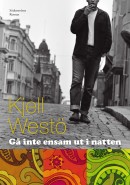 Gå inte ensam ut i natten
Gå inte ensam ut i natten
[Don’t go out into the night alone]
Helsinki: Söderströms, 2009. 604 p.
ISBN 978-951-52-2609-9
25 €, hardback
Finnish translation (by Katriina Savolainen): Älä käy yöhön yksin
Helsinki: Otava, 2009. 604 p.
ISBN 978-951-1-23833-1
25 €, hardback
This novel completes Kjell Westö’s Helsinki series and is his tenth book. As is the case with the three earlier books in this series (Drakarna över Helsingfors [‘The kites over Helsinki’], 1994, Vådan av att vara Skrake [‘The perils of being a Skrake’], 2000, and Där vi en gång gått [‘Where we once walked’], 2006, all also translated into Finnish) this is a character-driven, nostalgia-laden story that spans several decades. The central factor is music: in the 1960s three young people from different backgrounds become friends and record a single that ought to have been a huge hit, but because the song fades into obscurity, the circle of friends breaks up. In the latter part of the novel, a young man begins to investigate what became of the members of the trio and realises that his own life is linked to theirs. Westö (born 1961) writes remarkable experiential prose that brings the reader close to the characters. The retro setting may be a bit much for some: the avalanche of details feels rather excessive in places. Där vi en gång gått was awarded the Finlandia Prize in 2006. Another of Westö’s novels, Lang (2002), was published in England under the same title in 2005.
Kari Hotakainen: Ihmisen osa [The human lot]
9 October 2009 | Mini reviews, Reviews
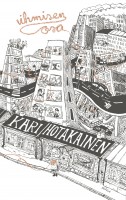 Ihmisen osa
Ihmisen osa
[The human lot]
Helsinki: Siltala, 2009. 276 p.
ISBN 978-952-234-021-4
30 €, hardback
Kari Hotakainen (born 1957) is one of Finland’s most internationally successful contemporary authors, and is widely known for his children’s books, plays and television screenplays. Like many of Hotakainen’s other works, Ihmisen osa is a contemporary novel, but it is one that sees the author being angrier and more ferocious than before; this is a story that will move readers and make them laugh. Its plot gets off to a slightly ungainly start: an impatient writer wants to ‘buy someone’s life’ for the purpose of turning it into material for a novel and is prepared to pay an elderly widow €7,000 for hers. A former yarn-seller tells him all about her life as she remembers it, and the writer writes it up into his own book – the husband’s wilful silence, a serious accident suffered by one of the three children, gradually being revealed. Having got the beginning out of the way, Hotakainen then puts his foot on the gas: in his laconic style he throws light on the conditions at the edges of contemporary working life: the business of selling images, selfishness and greed, the power of words. The yarn-seller writes to one of her children: ‘Don’t rise above your station. There’s no air up there, and you’ll get dizzy.’ Hotakainen’s novel Juoksuhaudantie (‘Trench Road’) was awarded the Finlandia Prize for Fiction in 2002. It has been translated into 17 languages and was awarded the Nordic Council’s Literature Prize in 2004.
Armas Järnefelt. Kahden maan mestari [Armas Järnefelt. Maestro of two countries]
2 October 2009 | Mini reviews, Reviews
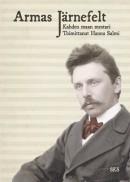 Armas Järnefelt. Kahden maan mestari
Armas Järnefelt. Kahden maan mestari
[Armas Järnefelt. Maestro of two countries]
Toim. [Ed. by] Hannu Salmi
Helsinki: Suomalaisen Kirjallisuuden Seura, 2009. 438 p., ill.
ISBN 978-952-222-057-8
€ 35, hardback
The conductor and composer Armas Järnefelt (1868–1959) was a member of one of Finland’s most prominent cultural families. His sister Aino was married to the composer Jean Sibelius. From 1905 he was the conductor of the Royal Opera in Stockholm and became a Swedish citizen. In the 1930s Järnefelt served as the artistic director and conductor of the Finnish Opera, forerunner of today’s Finnish National Opera. This book covers the various stages of his life and surveys the background to his compositions, with input from a number of Finnish music experts. Järnefelt, as a composer of beautiful melodies, was a part of the National Romantic tradition; his best-known piece, Berceuse (1904), is familiar to listeners around the world in many adaptations. Influences from Richard Wagner and Jean Sibelius are often seen in Järnefelt’s works. This book provides a more complete artistic portrait of Järnefelt than the rather superficial coverage previously available. Prior to the publication of this book, the committee responsible for the editorial work was incorporated as a society dedicated to Armas Järnefelt and has released musical scores, recordings and performances of Järnefelt’s works.
Kimmo Oksanen: Kerjäläisten valtakunta [Kingdom of beggars]
24 September 2009 | Mini reviews, Reviews
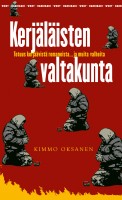 Kimmo Oksanen: Kerjäläisten valtakunta.Totuus kerjäävistä romaneista ja muita valheita
Kimmo Oksanen: Kerjäläisten valtakunta.Totuus kerjäävistä romaneista ja muita valheita
[Kingdom of beggars. The truth about Roma beggars, and other lies]
Helsinki: WSOY, 2009. 214 p.
ISBN 978-951-0-35778-1
€ 15, paperback
After Romania and Bulgaria had joined the European Union in 2007, a small group of Roma beggars from Romania arrived in Helsinki. This was a sight that was familiar to Finns on their travels abroad, but alien to them in the environment of their own city. Begging is not a crime in Finland, but the phenomenon caused a great stir in the media and, eventually, among political decision-makers. This polemic by journalist Kimmo Oksanen gives a face to the beggars and reveals many factors behind begging, as well as experiences of poverty and discrimination. Oksanen observed the beggars on the streets daily and travelled to their home villages to investigate their backgrounds. Roma criminal activity indisputably occurs elsewhere in Europe, but Oksanen maintains that there is no evidence that organised crime has arrived in Finland. The beggars are nevertheless objects of fear as well as racist attitudes.
Esko Rahikainen: Impivaaran kaski [The burnt clearing at Impivaara]
24 September 2009 | Mini reviews, Reviews
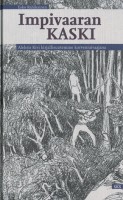 Impivaaran kaski. Aleksis Kivi kirjallisuutemme tienraivaajana
Impivaaran kaski. Aleksis Kivi kirjallisuutemme tienraivaajana
The burnt clearing at Impivaara. Aleksis Kivi as trailblazer of Finnish literature.
Helsinki: Suomalaisen Kirjallisuuden Seura, 2009. 270 p., ill.
ISBN 978-952-222-107-0
€ 29, hardback
This year marks the 175th anniversary of the birth of Finnish national author Aleksis Kivi (1834–1872). His work as a creator and cultivator of the Finnish language and literature was truly pioneering. Impivaaran kaski (the title refers to his major work, the novel Seitsemän veljestä, Seven Brothers, 1870) deals with the social conditions surrounding the creation of his works and examines their critical reception. Divisive literary disputes raged, and it was not until the second decade of the 20th century that Kivi’s status came to be acknowledged more widely. Esko Rahikainen – a librarian at the National Library and the author of several books on the life and works of Kivi – has utilised new sources to investigate the criticism and marketing of Kivi, as well as readers’ experiences and the use of his works in Finnish education.
Jarkko Nieminen: Pelaamisen lumo [The fascination of the game]
20 August 2009 | Mini reviews, Reviews
 Pelaamisen lumo [The fascination of the game]
Pelaamisen lumo [The fascination of the game]
Helsinki: Avain, 2009. 175 p., ill.
978-952-5524-69-7
€ 38, hardback
Tennis is a curious game, as everyone who plays it knows – and even those who don’t, which is why it is such a popular sport. Although Jarkko Nieminen (born 1981), a professional player since 2000, has not yet won a Grand Slam event for Finland, in 2006 he was ranked no. 13. (Unfortunately, this spring Nieminen injured his wrist and missed the top matches of the season.) In this book (edited and published by his sister Anna-Riikka Carlson, who founded the publishing company Avain in 2003), Nieminen tells the story of his athletic career. ‘In Japan my visa said I was an “entertainer”,’ he recalls as he describes what it’s like to walk out on a court filled with thousands of spectators. Tennis is a gentleman’s game, a polite duel (or double), and Nieminen is certainly a gentleman par excellence. His personal story is designed to be strictly informative, as he chooses to keep his family life private, for example (his wife Anu, née Weckström, a Finnish multiple badminton champion, is referred to once). There is no doubt, though, that the reader will be convinced of Nieminen’s happy choice of an athletic profession.
Julia Donner & Taneli Eskola: Löytöretki Helsinkiin. Exploring Helsinki. Helsingfors på upptäcktsfärd
20 August 2009 | Mini reviews, Reviews
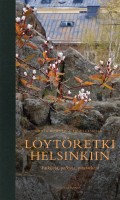 Löytöretki Helsinkiin. Paikkoja, polkuja, puutarhoja. Exploring Helsinki. Places, paths, gardens. I Helsingfors på upptäcktsfärd. Platser, stigar, trädgårdar
Löytöretki Helsinkiin. Paikkoja, polkuja, puutarhoja. Exploring Helsinki. Places, paths, gardens. I Helsingfors på upptäcktsfärd. Platser, stigar, trädgårdar
Helsinki: Multikustannus, 2008. 167 p., ill.
ISBN 978-952-468-147-6
€ 42, hardback
In this book, author Julia Donner and photographer Taneli Eskola make a walking tour of the less familiar byways of their native Helsinki, in the changing seasons between 2007 and 2008. Donner quotes authors and poets while recording some of the city’s history. She takes the reader through places often ignored – small, modest enclosures between buildings that only just qualify for the name of parks, suburban parklands or the rocky spaces that have been left untouched in the heart of the city. Eskola’s photographs record the graphic details of frost and sleet as well as the first tinges of spring green, of flora, rocks, water and sky. Some of the text is printed in both Swedish and English. A map would have been useful to readers who are not familiar with Helsinki; some of the photographs also lack captions. This beautiful book, designed by Timo Numminen, is an original series of views that have not been prettified but are true to the everyday life of the city. And readers who live in Helsinki will be surprised by what they discover.
Pekka Tarkka: Joel Lehtonen 1. Vuodet 1881–1917 [Joel Lehtonen 1. The years 1881–1917]
13 August 2009 | Mini reviews, Reviews
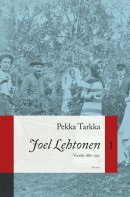 Joel Lehtonen 1. Vuodet 1881–1917
Joel Lehtonen 1. Vuodet 1881–1917
[Joel Lehtonen 1. The years 1881–1917]
Helsinki: Otava, 2009. 431 p., ill.
ISBN 978-951-1-23229-2
€ 37, hardback
The early years of the author Joel Lehtonen (1881–1934) were harsh ones: he was the illegitimate child of a mentally disturbed mother who abandonded her six-month-year baby in the forest. Fortunately Joel was adopted by a cultured clergyman who supported his education, making it possible for him to find a career in journalism and writing. The author and critic Pekka Tarkka published his doctoral dissertation on the changes in Joel Lehtonen’s view of human character in 1977. In this new book, the first general account of Lehtonen’s life and work, he presents an interesting view of the writer’s contradictory personality. Lehtonen’s travels in France, Italy and Switzerland strengthened his knowledge of foreign languages and his interest in Romance culture essential to his translator’s work. Lehtonen’s novels and short stories are often set in his home province of Savo, which he depicted through many phases of its social development. His most popular novel, Putkinotko, was published in 1919–1920. The first volume of Tarkka’s biography ends with Lehtonen’s writing in 1917 of the novel Kerran kesällä (‘Once in summer’), about a composer returning to Finland from abroad just as the Finnish Civil War is about to begin.
Sakari Toiviainen: Kadonnutta paratiisia etsimässä [In search of a lost paradise]
12 August 2009 | Mini reviews, Reviews
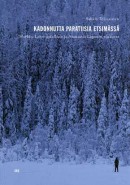 Kadonnutta paratiisia etsimässä. Markku Lehmuskallion ja Anastasia Lapsuin
Kadonnutta paratiisia etsimässä. Markku Lehmuskallion ja Anastasia Lapsuin
elokuvat
[In search of a lost paradise. The films of Lehmuskallio and Anastasia Lapsui]
Helsinki: Finnish Literature Society, 2009. 274 p., ill.
ISBN 978-952-222-067-7
€ 28, paperback
Markku Lehmuskallio (born 1938) is a filmmaker and photographer who since 1973 has made 18 full-length feature films, as well as a number of shorter ones. A half of his work is a collaborative venture with his wife Anastasia Lapsui, who is a native of the Nenets region in Arctic Russia. The main subjects of his films are the relationship between people and nature, and indigenous cultures throughout the northern hemisphere. Lehmuskallio’s early work reflects his activity as a pioneer of the green movement, as his films from that period deal with the environmental threat to the forests. Lehmuskallio has also directed fiction films, including the first to be made in the Nenets language, the award-winning Seven songs from the tundra. He has documented the conflicts between indigenous and national cultures, such as the destruction of the environment of the Siberian peoples in the process of gas and oilfield exploration. The filmographer Sakari Toiviainen had access to original material ranging from brittle old reels of film to diaries; Lehmuskallio’s own voice comes through clearly in the text.
Pauli Kruhse & Antero Uitto: Suomea rajan takana 1918–1944 [Finnish on the other side of the border 1918–1944]
6 August 2009 | Mini reviews, Reviews
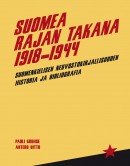 Suomea rajan takana 1918–1944: Suomenkielisen neuvostokirjallisuuden historia ja bibliografia
Suomea rajan takana 1918–1944: Suomenkielisen neuvostokirjallisuuden historia ja bibliografia
[Finnish beyond the border 1918–1944: a history and bibliography of Finnish-language literature in Soviet Union]
Helsinki: BTJ Finland Oy, The Finnish National Library, 2008. 395 p., ill.
ISBN 978-951-692-705-6
€ 49, paperback
The Finnish National Library possesses an impressive collection of Finnish-language literature published in the Soviet Union; the Soviet Karelia Collection contains around 3,800 titles on political and social themes, as well as fiction and poetry. Some of the material was captured from the Soviets during the Continuation War of 1941–1944. The Library has also augmented the collection with material in Finnish, written by Finns or dealing with Finland, which has been published in Russia. Listed in the bibliography are 566 Soviet books published in Finnish and 270 in Karelian, as well as works in private collections – many of these are bibliophilic rarities as a result of the attempt to destroy Finnish identity and the Finnish language in the Soviet Union during Stalin’s purges of 1937–38.
Marita Liulia: Choosing My Religion – Uskontoja jäljittämässä
30 July 2009 | Mini reviews, Reviews
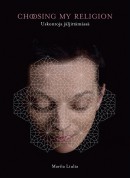 Choosing my Religion – Uskontoja jäljittämässä
Choosing my Religion – Uskontoja jäljittämässä
Käännökset englanniksi [English translations]: Michael Garner
Helsinki: Maahenki, 2009. 223 p., ill.
ISBN 978-952-5652-61-1
€ 38, hardback
Marita Liulia is a visual artist who specialises in interactive media art. Her works have been shown in more than 40 countries. Choosing my Religion discusses the nine major religions of the world. It contains 150 pictures and photographs, as well as texts by the artist and an article by associate professor of comparative religion Terhi Utriainen. The book, like the exhibition at Helsinki’s Kiasma museum which it accompanies, focuses on the religions and on animism. Liulia has travelled in 50 countries, studying religions and discussing them with both scholars and laymen. Her project concentrates on the possibilities of equal choice between religions and emphasises their positive aspects. The subject of the photographs in the book is the artist herself, who abandoned her Christian faith as a teenager. As a child she suffered from rheumatoid arthritis, and was unable to walk until she was 15. Liulia has portrayed herself in the traditional dress and emblems of the different faiths. In her view one of the features uniting all religions is the fact that in them women play the role of servants who pass on the faith to succeeding generations. Choosing my Religion comprises the book, the (touring) exhibition and a website.
Kaiken takana oli pelko. Kuinka Viro menetti historiansa ja kuinka se saadaan takaisin [Fear behind it all. How Estonia lost its history and how it will be recovered]
23 July 2009 | Mini reviews, Reviews
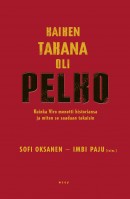 Kaiken takana oli pelko. Kuinka Viro menetti historiansa ja kuinka se saadaan takaisin
Kaiken takana oli pelko. Kuinka Viro menetti historiansa ja kuinka se saadaan takaisin
[Fear behind it all. How Estonia lost its history and how to get it back]
Toim. [Ed. by] Sofi Oksanen & Imbi Paju
Helsinki: WSOY, 2009. 563 p., ill.
ISBN 978-951-0-35111-6
€ 29, hardback
Twentieth-century Estonian history was marked by a brief German occupation (1918) and a Soviet occupation lasting nearly half a century (1940–1991). This book contains more than 30 articles by Finnish, Estonian, Russian, British and American experts in the field, dealing with with subjects that include the propaganda of the Soviet occupation, the methods of political oppression, environmental pollution, corruption and the situation of the arts and culture during the occupation. There are also previously suppressed memoirs and reminiscences by survivors of the Gulag prison camps. Sofi Oksanen (born 1977) is a Finnish writer of Estonian heritage who was awarded the 2008 Finlandia Prize for Fiction for her novel Puhdistus (‘Purge’), which is based on Estonian history. Imbi Paju (born 1959) is an Estonian film director and writer. The book deals with the morality of a totalitarian state in general, and examines how different contries have approached the concept of human rights violations in recent times. It has given rise to much debate about Finland’s relations with neighbouring Estonia and its people.
Lauri Timonen: Lähikuvassa Matti Pellonpää [Matti Pellonpää in closeup]
16 July 2009 | Mini reviews, Reviews
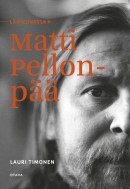 Lähikuvassa Matti Pellonpää
Lähikuvassa Matti Pellonpää
[Matti Pellonpää in close-up]
Helsinki: Otava, 2009. 335 p., ill.
ISBN 978-951-1-22903-2
€ 25, hardback
Matti Pellonpää (1951–1995) was one of the trusted actors, almost a trademark, of the film director Aki Kaurismäki. In 1993 he won the Felix Prize for best European male actor at the Berlin Film Festival for his role in La Vie de Bohéme. With his characteristic restrained empathy Pellonpää mostly played bohemians, unemployed people and outcasts. This portrait is built on the recollections of his friends and colleagues, as well as on the interviews by the author. These conversations deal with Pellonpää’s theatrical career and the musical experiments of his highly original band, Peltsix. The actor spent most of his free time in restaurants, where he eavesdropped on table talk and watched the eccentric personalities he encountered; the reader is also offered a sample of Pellonpää anecdotes.


